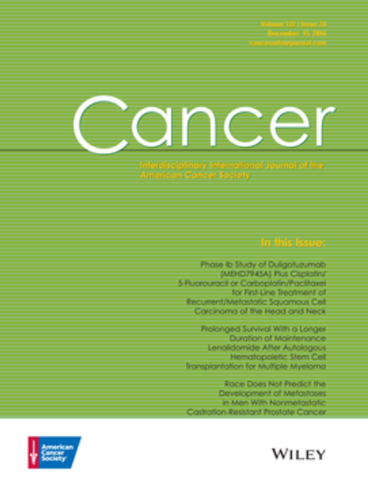Maintenance therapy with the FMS-like tyrosine kinase 3 inhibitor gilteritinib in patients with FMS-like tyrosine kinase 3–internal tandem duplication acute myeloid leukemia: A phase 2 study
Abstract
Background
The GOSSAMER phase 2 study assessed the FMS-like tyrosine kinase 3 (FLT3) inhibitor gilteritinib as maintenance therapy in patients with FLT3–internal tandem duplication (FLT3-ITD) acute myeloid leukemia (AML) in first complete remission without previous hematopoietic stem cell transplantation (HSCT).
Methods
Patients had to be within 2 months of their last consolidation cycle and have completed the recommended number of cycles per local practice. FLT3 inhibitors were allowed only during induction and/or consolidation. The primary end point was relapse-free survival (RFS). Secondary end points included overall survival (OS), event-free survival, and measurable residual disease (MRD).
Results
In total, 98 patients were randomized (gilteritinib, n = 63; placebo, n = 35). RFS was not significantly different between the arms (hazard ratio, 0.74; 95% confidence interval, 0.41–1.34; p = .16). RFS rates for the gilteritinib and placebo arms were 68.5% and 55.3% at 1 year, 51.8% and 44.9% at 2 years, and 41.2% and 40.8% at 3 years, respectively. OS was not significantly different between the arms but may have been affected by subsequent AML therapies after discontinuation. In patients who received subsequent therapy (gilteritinib, 46.8%; placebo, 60.0%), a higher percentage of placebo-treated (57.1%) versus gilteritinib-treated patients (27.6%) underwent HSCT. At the end of treatment, 96.4% of gilteritinib-treated and 85.7% of placebo-treated patients had undetectable MRD. Relapsed placebo-treated (86.7%) versus gilteritinib-treated patients (34.8%) had a greater FLT3 mutational burden. No new significant safety concerns were noted.
Conclusions
The primary end point was not achieved; however, an observed trend toward potential benefit was noted in patients with FLT3-ITD AML who had not undergone prior HSCT.


 求助内容:
求助内容: 应助结果提醒方式:
应助结果提醒方式:


